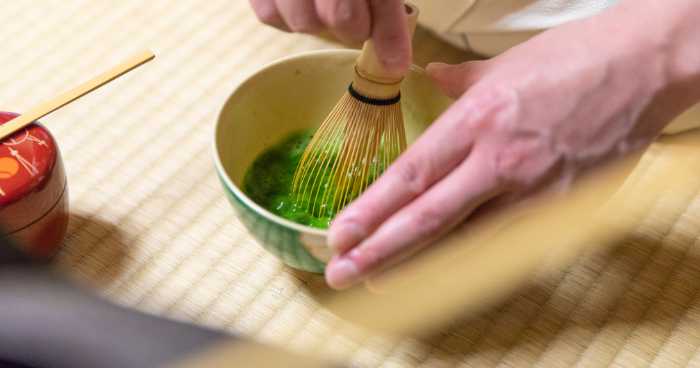When I first stepped into the calming world of Japanese tea ceremonies, I got to try traditional matcha for the first time. Let me tell you, it was a whole new vibe! Matcha has this rich, umami flavor that’s kinda earthy and a bit bittersweet—it really sticks with you in the best way.
That first sip wasn’t just about tasting something new; it kicked off my deep dive into the awesome world of Japanese culture, all thanks to this epic green powder. So, what’s the big deal with traditional matcha?
It’s way more than just tea. We’re talking about a centuries-old tradition that’s won over folks all over the world. Nowadays, matcha isn’t just for fancy tea ceremonies; it’s popping up in cafes and kitchens everywhere. People can’t get enough of its health perks and unique taste.
The Origins of Traditional Matcha
The story of traditional matcha is like a journey back in time to the misty hills of Japan hundreds of years ago. This awesome green tea first made its way to Japan from China around the late 12th century, thanks to a monk named Eisai. He didn’t just bring back some tea seeds; he also brought the Zen Buddhist way of whipping up powdered tea. Matcha became a big deal in Zen monasteries because it was perfect for meditation—packed with caffeine and a chill amino acid called L-theanine, it helps you stay alert yet calm.
But matcha didn’t just stay within the monastery walls. Over time, it became a key element of the Japanese tea ceremony, also known as “chanoyu.” This isn’t your average tea time—it’s a deeply spiritual ritual that’s all about harmony, respect, purity, and peace. The way matcha is prepared and enjoyed in these ceremonies is like a meditation on its own, aiming to lift your spirit and refine your character. More than just a drink, matcha represents a deep cultural and spiritual vibe in Japan.
Cultivation and Processing
Growing traditional matcha is all about the details and it starts weeks before the tea leaves are even picked. To get that iconic bright green color and boost the levels of amino acids, the tea bushes are shaded with a special cover known as “tana” for about 20 to 30 days. This shading trick cuts down on sunlight, slowing photosynthesis and pumping up the chlorophyll, which makes the leaves sweeter and richer—key for matcha’s unique taste.
When it’s time to harvest, only the youngest and freshest leaves are chosen, usually in early May during the first flush, when the flavor and nutrients are just right. These leaves are quickly steamed to stop oxidation, keeping their vibrant green and protecting their antioxidants. Next, they’re air-dried and the stems are removed, turning them into what’s called tencha.
The last step? Grinding the tencha into matcha using traditional granite stone mills. This part is super careful and slow—it can take an hour to get just 30 grams of matcha! This method keeps the powder cool, which keeps the flavors and nutrients intact. The final product is a fine, silky powder that’s deep green and packed with flavor, ready to be whisked into an energizing, frothy cup of goodness.
Ceremonial vs. Culinary Matcha
Matcha isn’t just one thing; it’s a whole spectrum of green tea powder, split into different grades depending on how you want to use it. Let’s break it down: Ceremonial grade matcha is the top-tier stuff. It’s what you’d use in a traditional Japanese tea ceremony. This matcha comes from the youngest and softest tea leaves, ground into a fine powder that mixes smoothly into water without any clumps. Its flavor is all about being subtle and slightly sweet, without any bitter aftertaste.
On the flip side, culinary grade matcha is the go-to for cooking and baking. It’s bolder, more robust, and a bit astringent, which is perfect for when you’re mixing it into recipes where you really want that matcha punch to come through.
So, what makes ceremonial matcha stand out? First up, it’s all about that vibrant, bright green color, a sign of high chlorophyll and amino acids, thanks to shading the tea plants just right before harvesting. Next, the texture should be super fine—like talcum powder—showing it’s been milled properly with traditional stone mills.
The flavor? It should hit the perfect balance of sweet and umami, with zero harsh bitterness. And don’t forget the aroma—it should be fresh and reminiscent of a lush green field. These qualities make sure that ceremonial matcha isn’t just tasty but also a treat for the eyes and nose, offering a truly uplifting experience true to the spirit of Japanese tea ceremonies.
Health Benefits Of Traditional Matcha
Matcha isn’t just a staple in Japanese culture—it’s also a big hit in the health community for its super impressive benefits. One of the biggest perks of sipping on matcha is its high levels of antioxidants, especially catechins. These bad boys are known for their cancer-fighting abilities and for helping to keep oxidative stress in check. Matcha is especially rich in a type of catechin called epigallocatechin gallate (EGCG), which you find a lot more of in matcha than in other green teas because you’re actually consuming the whole leaves, powdered down.
But there’s more! Matcha is also famous for boosting brain power and concentration. This comes from a cool combo of caffeine and an amino acid called L-theanine, which helps you relax without making you sleepy. Together, they create a kind of “alert calmness” that can stick with you for hours, making matcha a fantastic pick for keeping focused, whether you’re meditating, grinding through work, or hitting the books.
And the science backs all this up. For instance, a study by Sokary S, Al-Asmakh M, Zakaria Z, Bawadi H. “The therapeutic potential of matcha tea,” showed that folks who drank matcha regularly had better cognitive function and higher antioxidant levels compared to those who didn’t.
Another study, found that the EGCG concentration in matcha is way higher than in other types of green tea—137 times higher than China Green Tips green tea and 3 at least times than other green teas! These findings really boost the rep of matcha, proving it’s not just cool for cultural reasons but also a serious player in the health game.
Preparation Techniques
Making traditional matcha is a true blend of art and science, a skill that’s been perfected over centuries in Japan. To whip up matcha the traditional way, you’ll need some specific tools: a bamboo whisk (chasen), a tea bowl (chawan), a tea scoop (chashaku), and of course, the matcha powder.
Here’s how to get started: First, warm up your tea bowl by filling it with hot water. Then dump out the water and dry the bowl completely—this helps keep your matcha nice and warm when you mix it. Next, use the bamboo scoop to measure out about two scoops or one teaspoon of matcha powder into your pre-warmed bowl. Pour in about 70-80 ml of hot water (ideal temperature is between 75-80°C, not boiling) over the powder.
Now grab that bamboo whisk and start whisking vigorously in a W-shaped motion. This isn’t just to mix; it aerates the matcha, creating a smooth, frothy layer on top without any clumps. Keep going until you see a rich froth form, which should take about 15-30 seconds.
If you’re new to matcha, here are some tips to make your experience awesome:
- Quality Matters: Always go for high-quality ceremonial grade matcha. You can tell it’s good if it’s a bright, vibrant green.
- Temperature Control: Don’t use boiling water as it can make the matcha bitter. Slightly cooler water brings out the best flavor.
- Practice Makes Perfect: Don’t stress if you don’t get it right the first time. Making matcha is a skill that gets better with practice.
- Clean Immediately: Clean your whisk and bowl right after making matcha. This stops the residue from hardening, making cleanup easier and helping your tools last longer.
- Enjoy It Fresh: Matcha settles quickly, so drink it right after making it to enjoy its full flavor and texture.
These steps do more than just make a tasty cup of matcha—they’re a chance to chill out and soak in the moment, much like the focused vibe of a traditional Japanese tea ceremony.
Modern Uses of Matcha
Matcha has really stepped up from its traditional tea ceremony roots and become a global sensation, making a splash in cafes and kitchens everywhere. These days, it’s way more than just a ceremonial drink. You’ll find matcha in all sorts of modern treats, especially in cafes where matcha lattes are all the rage. These lattes mix the smooth, rich taste of matcha with creamy milk, and often a touch of honey or sugar to suit everyone’s sweet tooth. Not only are they tasty, but they also look super cool with their vibrant green color—a great alternative if you’re looking to switch from your regular coffee fix.
But matcha isn’t just in drinks; it’s made a big move into desserts too. Think matcha ice cream, cakes, cookies, and even doughnuts, all rocking that sweet, earthy flavor that goes so well with sugary goodies. People are also tossing matcha into smoothies, breakfast bowls, and even savory dishes like pastas and risottos, giving them a funky twist and a pop of color.
Matcha’s magic doesn’t stop in the kitchen—it’s also making waves in skincare, thanks to its awesome antioxidant properties. You can find matcha in all kinds of beauty products like face masks, serums, and creams. These goodies help fight inflammation, soothe redness, and detoxify the skin, making matcha a top pick in the natural beauty scene.
From edibles to face care, matcha’s flexibility and rising popularity show just how adaptable and beloved it is across different sectors. It continues to bridge the gap between traditional Japanese culture and modern lifestyle trends, proving its lasting charm and broad appeal.
Conclusion
Matcha, known for its stunning emerald color and layers of benefits, has truly stood the test of time as a cherished Japanese beverage. Its unique cultivation process, which involves shading tea bushes, coupled with a careful grinding technique, results in a powder that’s both rich in flavor and vivid in color. More than just a drink, matcha is a pivotal element of Japanese culture, especially celebrated in the artful Chanoyu tea ceremony that promotes mindfulness and harmony.
But the appeal of matcha goes beyond its cultural roots. Its impressive health benefits—like a high antioxidant content and the boost it gives to mental clarity—have catapulted matcha onto the global stage. Here, it has been warmly adopted in various forms, from the classic frothy cup to innovative uses in lattes, desserts, and even skincare products.
I encourage you to plunge into the world of matcha and explore its rich flavors and traditions for yourself. Whether you’re stirring up a traditional cup as part of a peaceful morning routine or experimenting with its versatility in recipes and beauty routines, matcha provides a unique and enriching experience. It connects you to an ancient tradition while offering health and wellness benefits that fit perfectly with modern lifestyles. Try matcha, and you might just add a new layer of tranquility and enjoyment to your daily life.
-
 Ujiha Koku Ceremonial Grade Matcha 50gPrice range: $59.99 through $69.99
Ujiha Koku Ceremonial Grade Matcha 50gPrice range: $59.99 through $69.99 -
 Ujiha Tsuyu Organic Ceremonial Grade Matcha 50g$66.99
Ujiha Tsuyu Organic Ceremonial Grade Matcha 50g$66.99 -
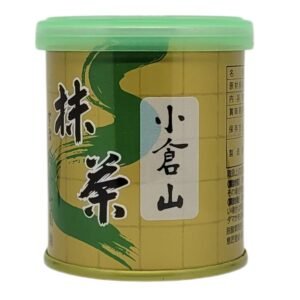 Yamamasa Koyamaen Ogurayama 30g$54.99
Yamamasa Koyamaen Ogurayama 30g$54.99 -
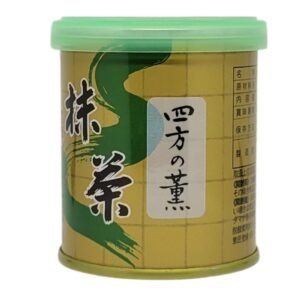 Yamamasa Koyamaen Yomonokaori 30g$52.99
Yamamasa Koyamaen Yomonokaori 30g$52.99 -
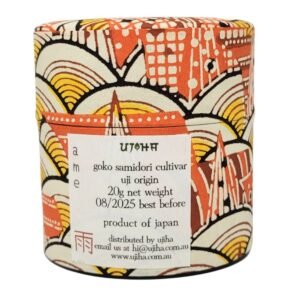 Ujiha Ame Supreme Ceremonial Grade Matcha 2024 First HarvestPrice range: $39.99 through $54.99
Ujiha Ame Supreme Ceremonial Grade Matcha 2024 First HarvestPrice range: $39.99 through $54.99 -
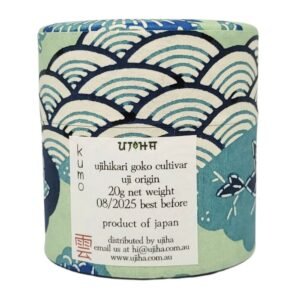 Ujiha Kumo Super Supreme Ceremonial Grade Matcha First Harvest 2024Price range: $49.99 through $64.99
Ujiha Kumo Super Supreme Ceremonial Grade Matcha First Harvest 2024Price range: $49.99 through $64.99 -
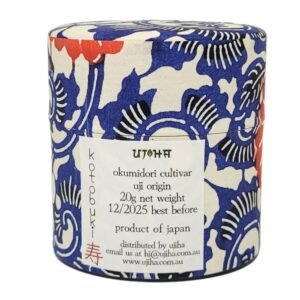 Ujiha Kotobuki Supreme Organic Ceremonial Grade MatchaPrice range: $39.99 through $54.99
Ujiha Kotobuki Supreme Organic Ceremonial Grade MatchaPrice range: $39.99 through $54.99 -
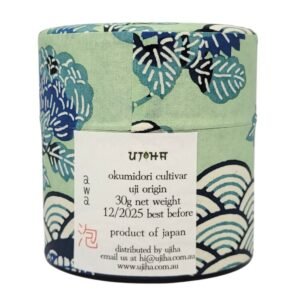 Ujiha Awa Premium Organic Ceremonial Grade Matcha 2024 First HarvestPrice range: $44.99 through $59.99
Ujiha Awa Premium Organic Ceremonial Grade Matcha 2024 First HarvestPrice range: $44.99 through $59.99 -
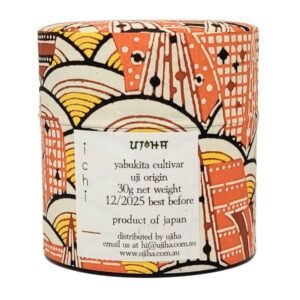 Premium Ceremonial Grade Matcha Ichi 40g First Harvest 2025Price range: $39.99 through $54.99
Premium Ceremonial Grade Matcha Ichi 40g First Harvest 2025Price range: $39.99 through $54.99
As we wrap up our exploration of the lush world of matcha, from its ancient roots in Japanese ceremonies to its trendy role in today’s kitchens and spas, I invite you to dive deeper and share your own matcha moments. Have you ever whisked up a traditional bowl of matcha at home? Or maybe you’ve gotten creative with matcha in your baking or added it to your wellness routine?
Whether you’re already a matcha pro or just starting to explore this vibrant green powder, your stories and questions help make our communi-tea even richer. Drop a comment below with your matcha experiences, your go-to matcha recipes, or any queries you might have about making matcha part of your life. Let’s keep the conversation going and continue to celebrate the vibrant and versatile world of matcha together!

